5 Minute Magnetic Compass
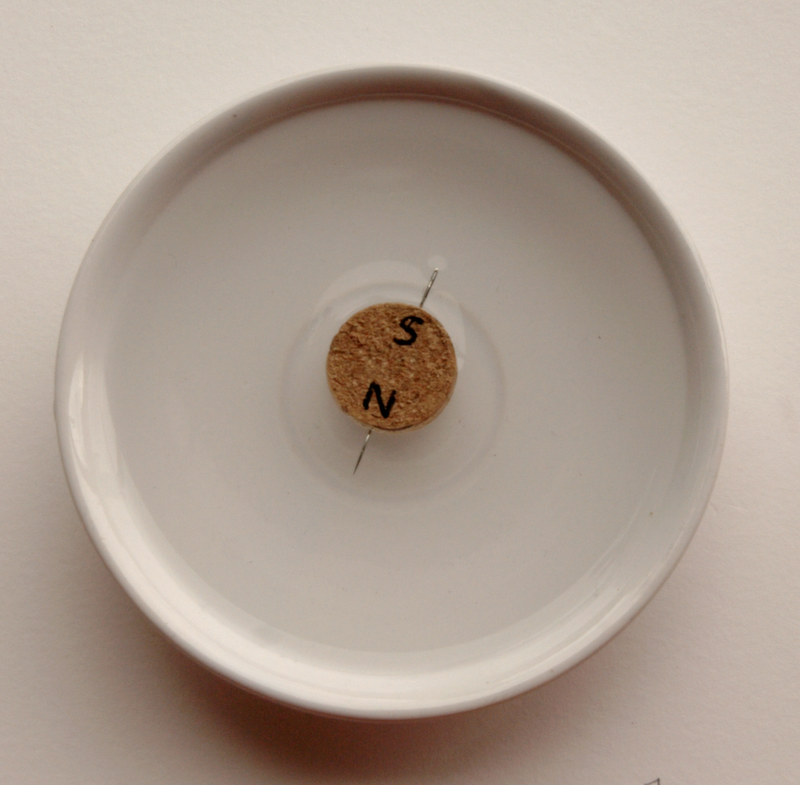
In this article you will learn how to construct the Magnetic Compass in its simplest form; you will harness electromagnetism for practical purposes and the delight of discovery, leaving the abstract theories to salaried scientists.
A compass is a magnetized piece of iron that’s free to pivot. Circulation of molten iron in the Earth’s core creates a magnetic field, and the magnetized needle of a compass aligns itself with the field’s lines of force. Because they provide a fixed reference for direction, humans have used compasses to find their way for thousands of years. In about five minutes you can build your own!
Materials
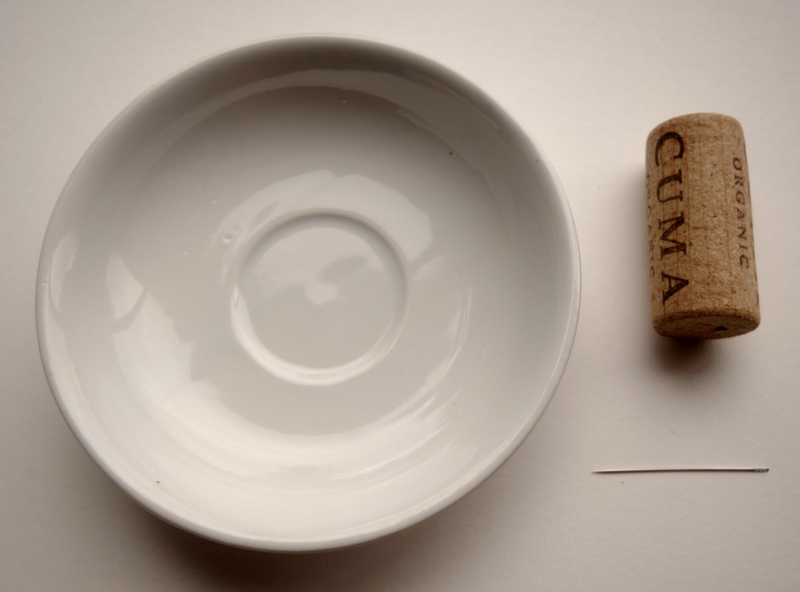
-
A NEEDLE: This will form the literal ‘Compass Needle’. It doesn’t have to be a needle — you can use any similarly shaped piece of iron or steel.
-
A CORK OR PIECE OF STYROFOAM: This will float in a dish of water and allow the magnet to spin freely.
-
A SMALL GLASS, PLASTIC, OR CERAMIC DISH: When filled with water this will support the compass and allow the cork and needle to float without obstruction. It must be made of a non-magnetic material.
TOOLS
-
A STRONG MAGNET (not pictured): I would recommend a Neodymium or ‘Rare Earth’ magnet, because of their strength, but any magnet will work — even the naturally occurring mineral Lodestone.
-
ADHESIVE PUTTY or SCOTCH TAPE (not pictured): To hold the needle down while you magnetize it, and optionally to mount it to the float.
-
A CUTTING IMPLEMENT (not pictured): Whatever you’re comfortable with — a pocket knife, hobby knife, matt knife, or hacksaw would work.
BUILD THE COMPASS
Cut the Float
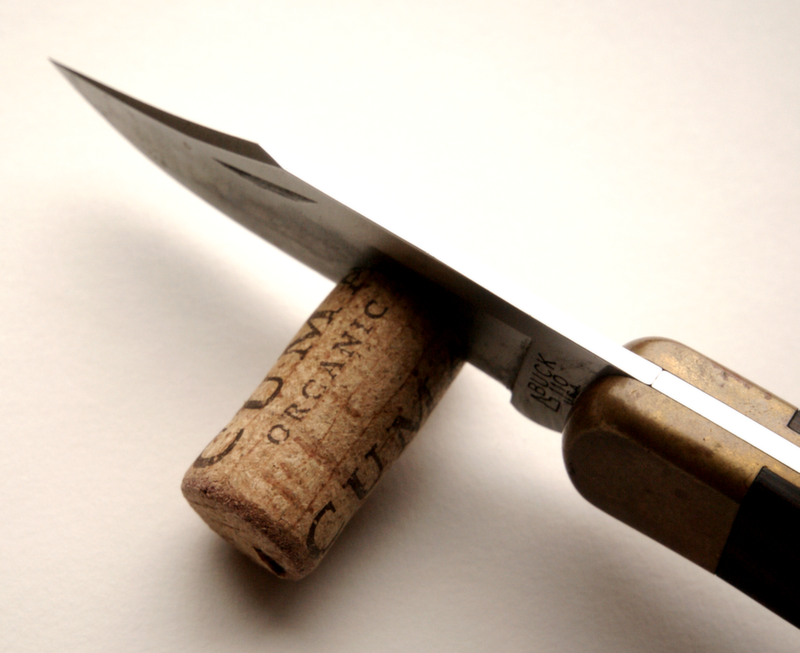
Cut a slice off your float material (cork in the photos) between an eighth and a quarter of an inch thick.
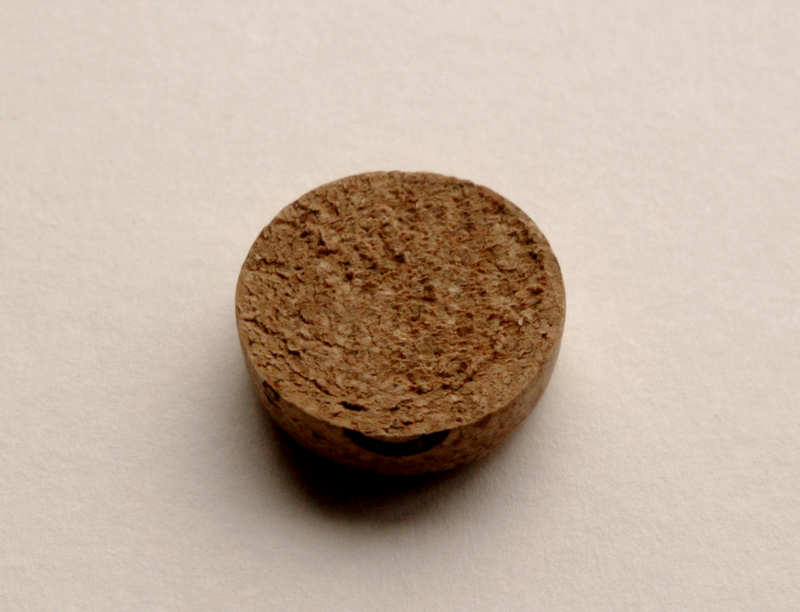
Magnetize the Needle
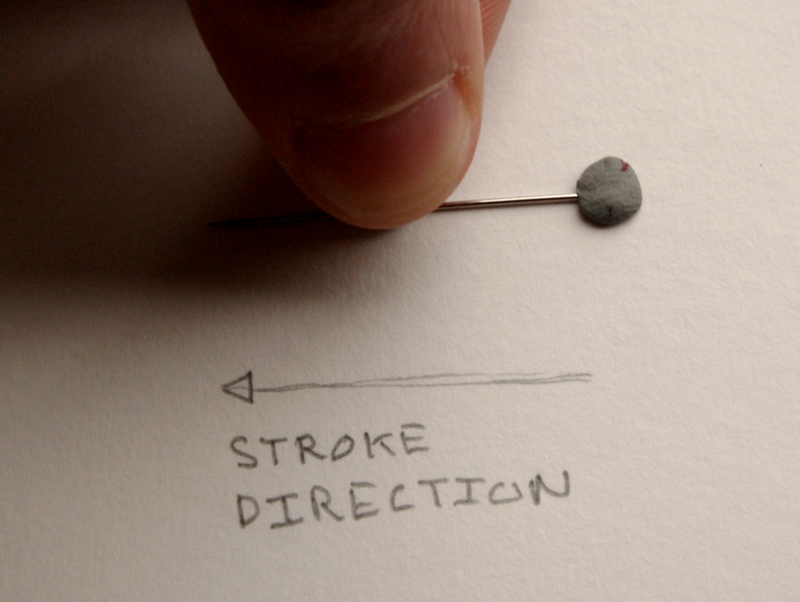
Secure the needle to a flat surface with tape or adhesive putty. Making sure that the north pole of your magnet is facing up, stroke from the eye to the point of the needle ten times. Lift magnet away when you move it back from the point to the eye.
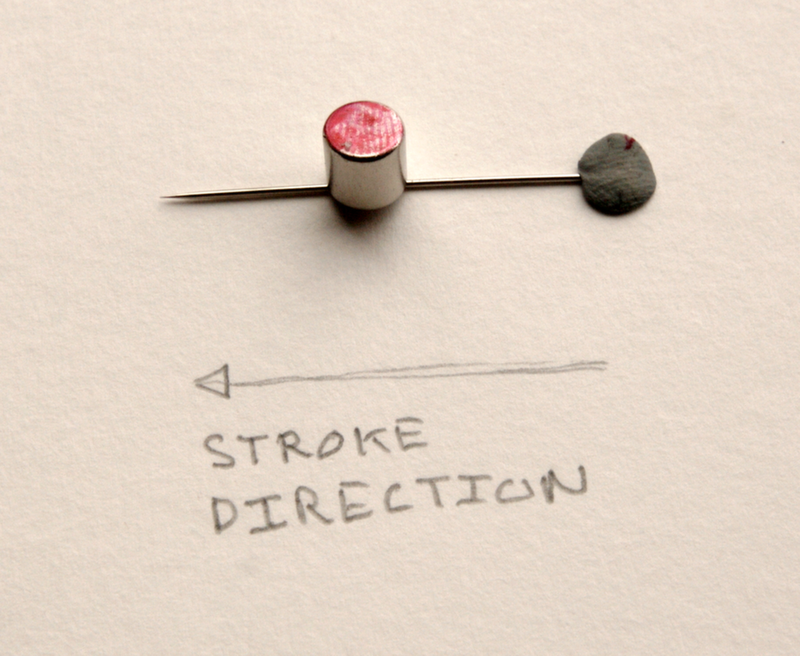
Assemble the Compass
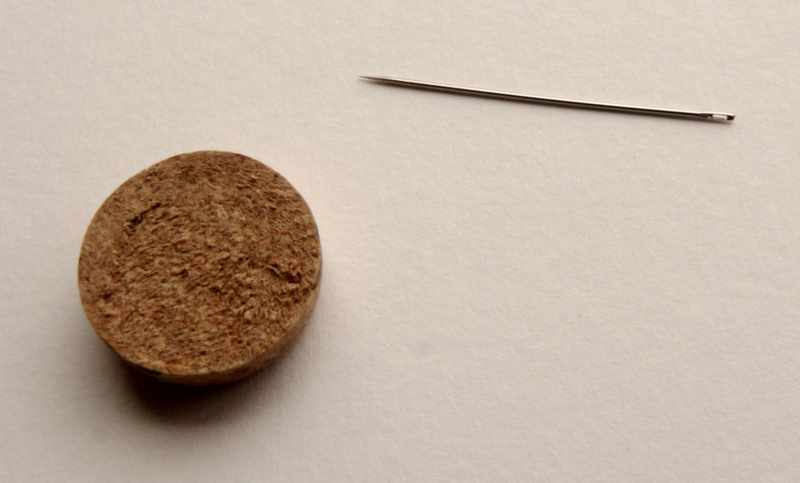
There are two ways to do this: you can follow the pictures, and push the needle through the cork float; or you can use adhesive putty or tape to affix it to the top of the float. The first method is tidier, but somewhat risky for the fingers, so use your own judgment.
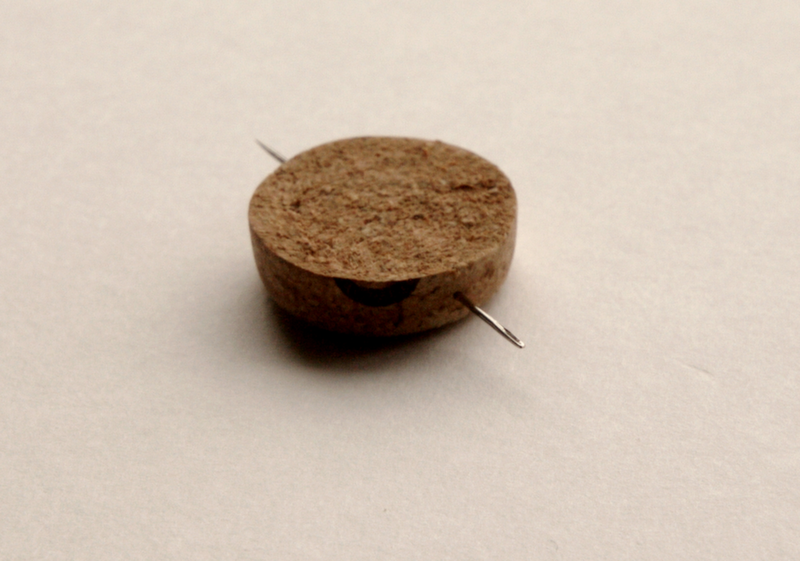
Use your Compass
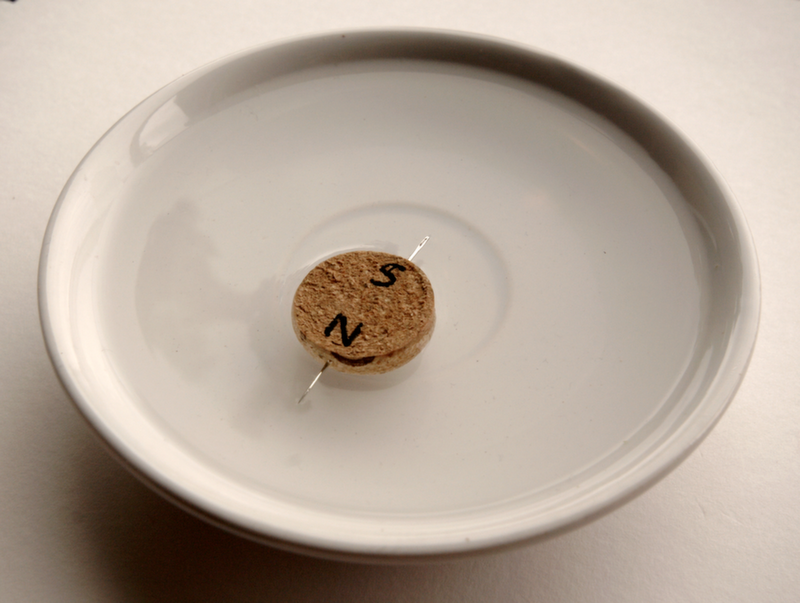
Fill your dish with water and drop the compass in. Voila! The float and needle will rotate so that the needle points North. Try spinning it around a few times and watch it correct itself, or compare it to a store-bought compass.
Try disrupting it with the magnet you used to magnetize the needle, or rotate the dish and watch the cork stay put.
This is handy as it is, but you have no reference for anything other than North; consider printing out a ‘Compass Rose’ such as the one below and sticking it to the float, or just keeping it to reference against.
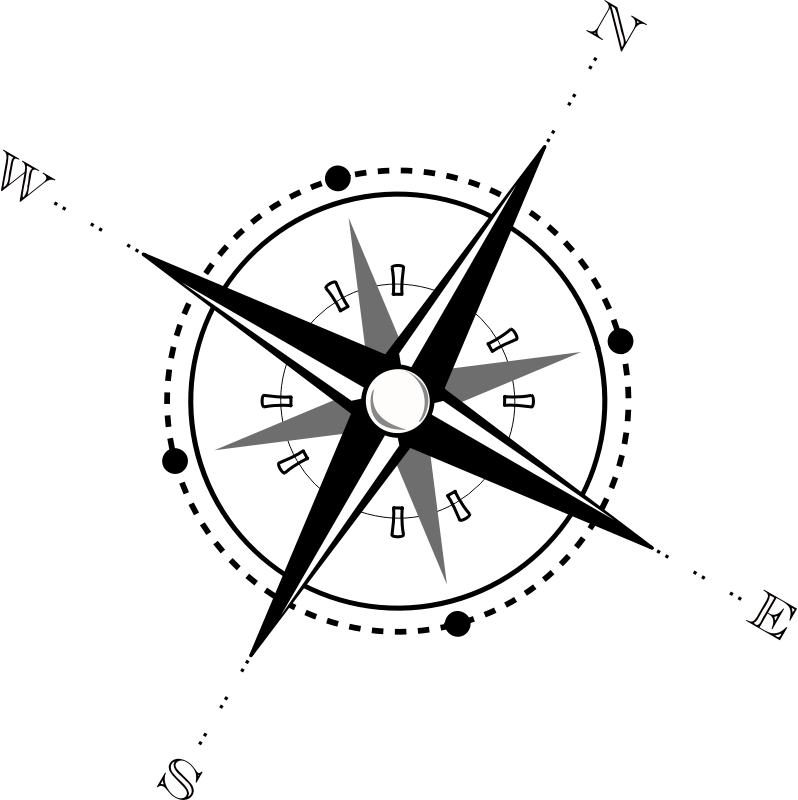
A Technical Digression
These days, when you go somewhere, you probably don’t get lost too often. Whether sailing around the world or looking for the nearest Thrifties in a new town, the people of today don’t need to engage many brain cells — instead, their smartphone crawls out of their pocket, and, after a few flicks, a digital representation of the world is at their physical and mental fingertips. When you go somewhere, chances are you rely on the Global Positioning System, or GPS.
The global positioning system is a network of satellites orbiting earth, maintained by the US government (other countries have similar systems, but GPS is the most widespread), that provide location and time information to anyone with a GPS receiver. How this works is your GPS receiver connects to at least four satellites, which are continuously transmitting their location and the time each message is transmitted. The receiver then calculates its position (with the help of some complicated navigational equations) based on the transit time of the signals from the satellites.
You probably use it all the time, but the GPS system is, quite frankly, rather complicated, and you can’t bet on always being able to rely on it … what if you were lost with nothing but a rough map and what’s in your pockets? You would need a aompass. The compass was originally invented as a device for Divination in the Chinese Han Dynasty (about 206 BCE), but was not used for navigation until 1040 CE.
A compass functions as a pointer to “magnetic north” because the magnetized needle at its heart aligns itself with the lines of the Earth's magnetic field. The magnetic field exerts a torque on the needle, pulling one end or pole of the needle toward the Earth's North magnetic pole, and the other toward the South magnetic pole. The needle is mounted on a low friction pivot point, in better compasses a jewel bearing, so it can turn easily. When the compass is held level, the needle turns until, after a few seconds to allow oscillations to die out, one end points toward the North magnetic pole.
Thanks, Wikipedia. If you want to dig deeper check out the full Wikipedia section on how magnetic compasses work.
Going Further
You could this compass for Orienteering, or to navigate when you’re on the water.
Because the compass is so small, you can stash everything you need in a film canister or tin: that way, if you get lost you can float the compass on a puddle or pond to find your way again.
It is also possible to create a compass by placing a magnet on its side in a plastic bottle cap and floating that in a dish of water, although it is not as accurate — that’s how I determined which was the north pole of the magnet I had lying around!
